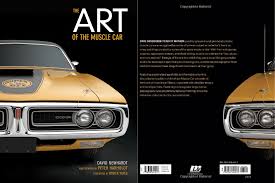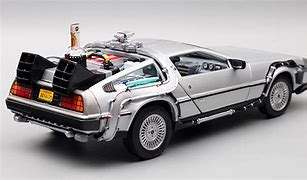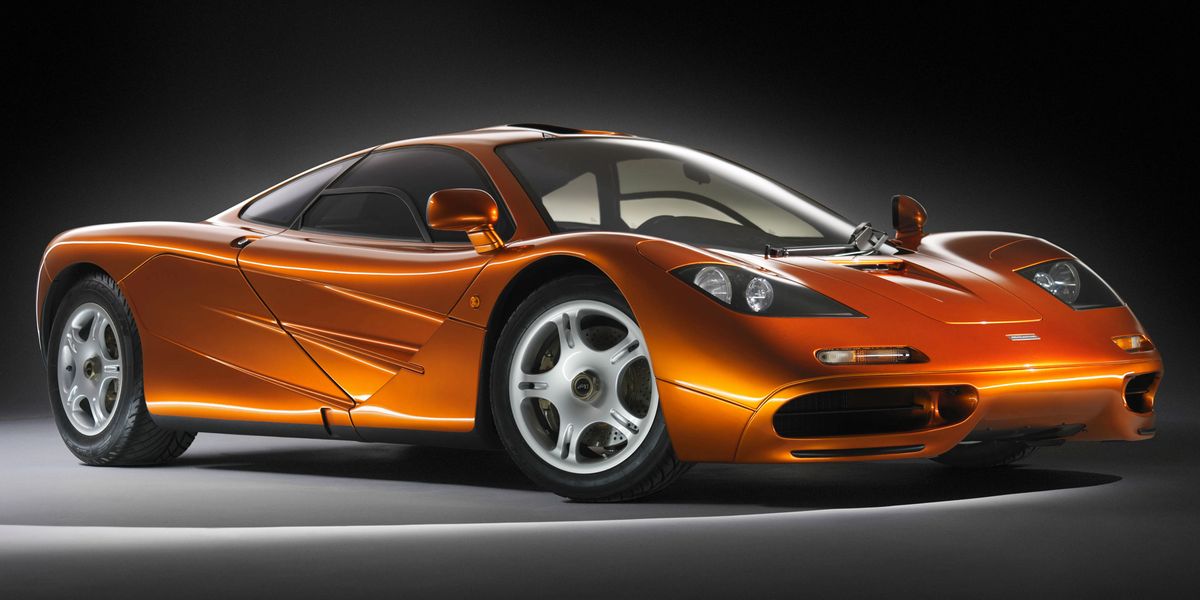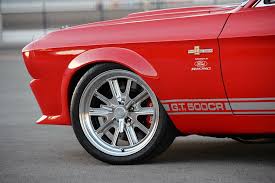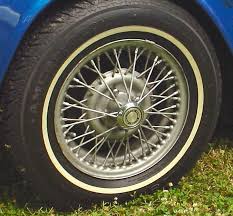A brief history of
Tesla
Introduction
The car manufacturer Tesla has made an important impact on the automotive world. In this article we will give a brief but detailed history of the Tesla marque.
We will look at the origins of Tesla looking at who, why, where and when Tesla was founded. We'll look at the design of the iconic Tesla logo and what are some the more significant Tesla models.
We'll take a glance at what racing history the Tesla has and who some of the most important people have been in the history of Tesla over the years.
Who, where, when and why was
Tesla founded?
Tesla, the renowned electric car manufacturer, was founded by a group of entrepreneurs, engineers, and visionaries with a mission to accelerate the world's transition to sustainable transportation. The company was established in 2003 by Martin Eberhard and Marc Tarpenning, who were later joined by Elon Musk, JB Straubel, and Ian Wright.
The idea for Tesla originated from Martin Eberhard and Marc Tarpenning's desire to create an electric car that could rival traditional gasoline-powered vehicles in terms of performance and range. They recognized the potential of electric propulsion systems and sought to build a high-performance electric sports car. With a shared passion for clean energy and a commitment to reducing carbon emissions, Eberhard and Tarpenning founded Tesla in San Carlos, California, with the goal of revolutionizing the automotive industry.
Elon Musk, an entrepreneur and business magnate, played a pivotal role in Tesla's development. In 2004, Musk became the company's lead investor and chairman of the board. His involvement brought a new level of ambition and drive to the company's vision. Musk recognized the need for electric vehicles to be more accessible to the mass market, and he set out to expand Tesla's product line beyond sports cars, ultimately envisioning an electric vehicle for every segment.
Tesla's headquarters and primary manufacturing facilities are located in California, with the company's main production plant, known as the Tesla Factory, situated in Fremont. The strategic location allows Tesla to tap into the region's technological expertise and proximity to innovation hubs, facilitating collaboration and attracting top talent in the industry.
The founders' vision for Tesla was driven by a belief in sustainable transportation and a commitment to reducing the world's dependence on fossil fuels. They aimed to prove that electric vehicles could be a practical and desirable alternative to traditional internal combustion engines, challenging the perception that electric cars were slow, limited in range, and lacking in performance. By combining cutting-edge technology, sleek design, and an unwavering focus on innovation, Tesla aimed to redefine the automotive landscape and inspire a global shift towards sustainable mobility.
With the introduction of the Tesla Roadster in 2008, the company made a significant breakthrough in the electric vehicle market. The Roadster showcased the capabilities of electric propulsion, offering high performance and an impressive range that challenged conventional perceptions of electric cars. It served as a catalyst for change, sparking widespread interest and setting the stage for Tesla's subsequent models.
Since its inception, Tesla has expanded its product lineup to include the Model S, Model 3, Model X, and Model Y, catering to different segments and customer preferences. These vehicles have garnered praise for their advanced electric drivetrains, long-range capabilities, innovative features, and unmatched acceleration. Tesla's commitment to continuous improvement and technological innovation has been evident through software updates that enhance vehicle performance and introduce new features over time.
Moreover, Tesla's introduction of the Supercharger network, a network of fast-charging stations, addressed one of the key concerns associated with electric vehicles: range anxiety. By strategically deploying Superchargers along popular travel routes, Tesla has facilitated long-distance travel and made electric vehicles a practical choice for daily commuting and road trips.
Tesla's groundbreaking efforts have not only revolutionized the electric vehicle industry but have also extended to energy storage solutions. The company's development of battery technologies, such as the Powerwall and Powerpack, has transformed the renewable energy landscape by enabling efficient energy storage for homes, businesses, and utilities. Tesla's energy storage solutions play a vital role in creating a sustainable energy ecosystem and supporting the integration of renewable sources into the power grid.
Overall, Tesla's foundation was built on the vision of its founders to create electric vehicles that deliver exhilarating performance, long-range capabilities, and a sustainable future. Through technological innovation, relentless pursuit of excellence, and a commitment to renewable energy, Tesla has reshaped the automotive industry, redefined the perception of electric vehicles, and inspired a global movement towards sustainable transportation.
How did the
Tesla logo originate?
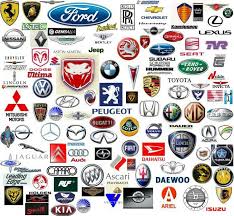
How did the Tesla logo originate?
The logo of Tesla has undergone a subtle yet significant evolution since the company's inception. The Tesla logo reflects the brand's mission to accelerate the world's transition to sustainable energy and its commitment to innovation, elegance, and forward-thinking.
When Tesla was founded, the company introduced a logo that showcased its dedication to electric propulsion. The original logo featured a simplified representation of a section of an electric motor, with the "T" of Tesla incorporated into the design. This initial logo was clean, minimalist, and instantly recognizable, symbolizing the brand's focus on electric power and technological advancement.
In subsequent years, Tesla refined its logo design to reflect its expanding product line and evolving vision. The current Tesla logo features the same iconic "T" symbol but with a sleek, elongated appearance. The refined logo exudes sophistication and embodies the brand's emphasis on high-performance electric vehicles and cutting-edge technology.
Notably, the Tesla logo is intentionally absent of any explicit automotive references. This deliberate omission aligns with Tesla's broader vision of challenging traditional automotive norms and reimagining the future of transportation. By presenting a logo that focuses on the letter "T" and the brand name itself, Tesla communicates a sense of innovation and a departure from conventional automobile design.
The simplicity and elegance of the Tesla logo are in line with the brand's commitment to clean energy and sustainable practices. The sleek design reflects the smooth and efficient nature of electric vehicles, while the absence of extraneous details reinforces Tesla's dedication to minimalist design principles. The logo serves as a visual representation of Tesla's mission to redefine the automotive industry and reshape the perception of electric mobility.
What are some of the significant
Tesla models?
Tesla, the leading electric car manufacturer, has produced a range of significant models that have revolutionized the automotive industry and propelled the adoption of electric vehicles. With a focus on higher performance, Tesla has consistently pushed the boundaries of what is possible in terms of speed, acceleration, and range.
In the early years of Tesla's history, the Tesla Roadster emerged as the company's flagship model. Introduced in 2008, the Roadster was a groundbreaking electric sports car that shattered preconceived notions about the limitations of electric vehicles. With its sleek design and blistering acceleration, the Roadster showcased the performance potential of electric propulsion. It boasted a top speed of over 200 mph (322 km/h) and a range of around 245 miles (394 km), setting a new standard for electric sports cars.
As Tesla expanded its lineup, the Model S made its debut in 2012, marking the company's entry into the luxury sedan segment. The Model S redefined what an electric car could be, offering exceptional range, luxury features, and unparalleled acceleration. With a range of over 300 miles (483 km) on a single charge and the ability to sprint from 0 to 60 mph (0 to 97 km/h) in just a few seconds, the Model S demonstrated the true potential of electric performance sedans.
In the following years, Tesla ventured into the SUV market with the introduction of the Model X. This all-electric SUV combined the spaciousness and versatility of a traditional sport utility vehicle with the performance and efficiency of electric power. The Model X introduced innovative features such as falcon-wing doors and advanced autopilot capabilities, further distinguishing Tesla as a pioneer in the industry.
In 2017, Tesla unveiled the highly anticipated Model 3, aimed at making electric vehicles more accessible to a wider audience. The Model 3 quickly became one of Tesla's most significant models, with its sleek design, impressive range, and advanced technology. It achieved mass-market appeal and accelerated the adoption of electric vehicles worldwide. The Model 3 offered various performance options, including a high-performance dual-motor variant known as the Model 3 Performance, which boasted exhilarating acceleration and handling.
Continuing its commitment to higher performance, Tesla introduced the Model Y in 2020. The Model Y, a compact SUV built on the same platform as the Model 3, combined the practicality of an SUV with the performance and efficiency of electric power. It featured impressive acceleration, a spacious interior, and advanced safety features, further expanding Tesla's reach in the competitive SUV market.
Furthermore, in 2021, Tesla unveiled the Model S Plaid, a flagship variant of the Model S. The Model S Plaid showcased Tesla's relentless pursuit of performance, featuring mind-boggling acceleration, a top speed of 200 mph (322 km/h), and a range of over 390 miles (628 km). It introduced advanced technologies such as a new tri-motor setup and an enhanced interior, solidifying its position as one of the fastest production cars in the world.
Each of Tesla's significant models has pushed the boundaries of electric vehicle performance and functionality. From the groundbreaking Roadster to the luxurious Model S, the versatile Model X, the accessible Model 3, the compact Model Y, and the high-performance Model S Plaid, Tesla has continuously raised the bar in terms of electric vehicle capabilities.
These models have not only reshaped the perception of electric vehicles but have also accelerated the global transition to sustainable transportation. Tesla's commitment to higher performance has proven that electric cars can be both practical and thrilling, offering drivers an exhilarating and eco-friendly driving experience.

One of Tesla's Most Iconic Models
Who are some of the most important people in
Tesla's History
Tesla owes much of its success to the vision, leadership, and contributions of several significant individuals who have played key roles in shaping the company's trajectory and pushing the boundaries of electric vehicle technology.
Elon Musk, the co-founder and CEO of Tesla, stands as a central figure in the brand's history. Musk's bold vision, relentless pursuit of innovation, and unwavering determination have been instrumental in driving Tesla's growth and transforming the automotive industry. With his visionary leadership, Musk has not only positioned Tesla as a market leader but has also spearheaded advancements in battery technology, autonomous driving systems, and sustainable energy solutions. Musk's ability to challenge conventional thinking and inspire a culture of innovation has been a driving force behind Tesla's success.
JB Straubel, one of Tesla's co-founders, played a vital role in developing the technology that underpins Tesla's electric vehicles. As the former Chief Technical Officer (CTO) of Tesla, Straubel was responsible for overseeing the development of the company's battery and powertrain systems. His expertise in battery technology and his commitment to sustainable transportation were instrumental in the successful implementation of Tesla's battery technology and the advancement of electric vehicle performance. Straubel's contributions laid the foundation for Tesla's dominance in the electric vehicle market.
Franz von Holzhausen, Tesla's Chief Designer, has played a crucial role in shaping the iconic and distinctive designs of Tesla's vehicles. With his background in automotive design and a keen eye for aesthetics, von Holzhausen has brought a fresh and innovative approach to the design language of Tesla's electric cars. His visionary designs have not only elevated the visual appeal of Tesla's vehicles but have also contributed to their aerodynamic efficiency and overall performance. Von Holzhausen's influence on Tesla's design philosophy has played a significant part in establishing the brand's recognizable identity.
Additionally, the talented team of engineers, designers, and technicians at Tesla has been instrumental in the brand's success. These individuals, with their expertise in electric vehicle technology, battery systems, autonomous driving, and manufacturing processes, have collectively contributed to Tesla's reputation for technological excellence and cutting-edge innovation. Their dedication and passion for creating exceptional electric vehicles have pushed the boundaries of what is possible in the automotive industry.
Moreover, Tesla's customers and enthusiasts form an essential part of the Tesla community. Their feedback, loyalty, and unwavering support have contributed to Tesla's growth and success. Tesla owners, often referred to as "Tesla evangelists," play a crucial role in spreading the brand's message and accelerating the adoption of electric vehicles. Their enthusiasm for Tesla's products and their commitment to sustainable transportation have helped establish Tesla as a global leader in the electric vehicle market.
Together, these significant individuals and the collective efforts of the Tesla team have revolutionized the automotive industry and reshaped the perception of electric vehicles. Through their unwavering commitment to innovation, sustainability, and driving excellence, they have propelled Tesla to the forefront of the electric vehicle revolution. Tesla's success is not just attributed to a single person, but rather to a passionate and dedicated group of individuals working towards a shared vision of a sustainable future.

One of the most influential people in the history of Tesla
Tesla's Racing History
Tesla has not traditionally been involved in professional racing as a company. Instead, its focus has been on revolutionizing the consumer electric vehicle market and advancing sustainable transportation. However, Tesla vehicles have made occasional appearances in various racing events, showcasing their exceptional performance and challenging conventional perceptions of electric cars.
One notable racing event that Tesla has participated in is the Pikes Peak International Hill Climb. In 2019, a modified Tesla Model 3, known as the "Tesla Model 3 Pikes Peak," competed in the Exhibition class. The vehicle, driven by professional race car driver Randy Pobst, demonstrated the capabilities of electric power by conquering the challenging 12.42-mile (19.99 km) course with its winding turns and steep elevation changes. The Model 3 Pikes Peak showcased its impressive acceleration and handling, highlighting the potential of electric vehicles in motorsports.
Tesla vehicles have also been involved in unofficial drag racing events, where their instant torque and rapid acceleration have caught the attention of racing enthusiasts. Tesla's high-performance models, such as the Model S Performance and Model 3 Performance, have proven their ability to outperform many traditional internal combustion engine cars in straight-line acceleration. These impressive drag racing performances have contributed to changing the perception of electric cars and their capabilities on the race track.
Additionally, Tesla owners and enthusiasts have organized their own racing events, often referred to as "Tesla Racing Days" or "Tesla Track Days." These events provide an opportunity for Tesla owners to bring their vehicles to a closed track and explore the performance capabilities of their cars in a controlled environment. These grassroots racing gatherings foster a sense of community among Tesla owners and create a platform to showcase the speed, handling, and exhilaration that Tesla vehicles can offer.
While Tesla's involvement in professional racing has been limited, the company has indicated an interest in creating its own racing series in the future. Tesla's CEO, Elon Musk, has expressed plans to launch a "Tesla Electric GT" series that would exclusively feature Tesla vehicles. This proposed racing series would provide a platform for Tesla to showcase the performance and endurance of its electric cars in a dedicated racing environment.
Moreover, Tesla's involvement in racing-related technologies extends beyond the track. Tesla's advancements in battery technology and electric powertrains have influenced the development of high-performance electric race cars by other manufacturers. The company's achievements in extending range, optimizing energy efficiency, and delivering high torque have inspired the industry and accelerated the adoption of electric powertrains in racing vehicles.
While Tesla's racing history may not be as extensive as some traditional automakers, the brand's focus on performance, innovation, and electric propulsion has had a significant impact on the perception of electric cars in the racing world. Through their occasional participation in racing events, Tesla vehicles have demonstrated their impressive acceleration, handling, and overall performance capabilities. As the popularity of electric vehicles continues to grow, it is likely that Tesla's presence in professional racing and enthusiast events will continue to expand, further solidifying the brand's position as a leader in electric vehicle technology and performance.
Summary
Tesla has redefined the automotive industry with its innovative and high-performance electric vehicles. Founded by a group of visionaries with a mission to accelerate the world's transition to sustainable transportation, Tesla has become synonymous with cutting-edge technology, exceptional range, and exhilarating performance.
Led by the visionary Elon Musk, Tesla has introduced a range of significant models that have shattered preconceived notions about electric vehicles. From the groundbreaking Roadster to the luxurious Model S, the versatile Model X, the accessible Model 3, and the compact Model Y, Tesla has consistently pushed the boundaries of electric vehicle capabilities.
With an unwavering commitment to sustainability, Tesla has not only transformed the consumer electric vehicle market but has also influenced the industry as a whole. Through its advancements in battery technology, energy storage solutions, and charging infrastructure, Tesla has paved the way for widespread adoption of electric vehicles and renewable energy integration. Tesla's impact extends beyond the automotive realm, as the company's innovations have sparked a global movement towards sustainable transportation and a cleaner future.
View Tesla Car Specifications
More Manufacturer Histories.
